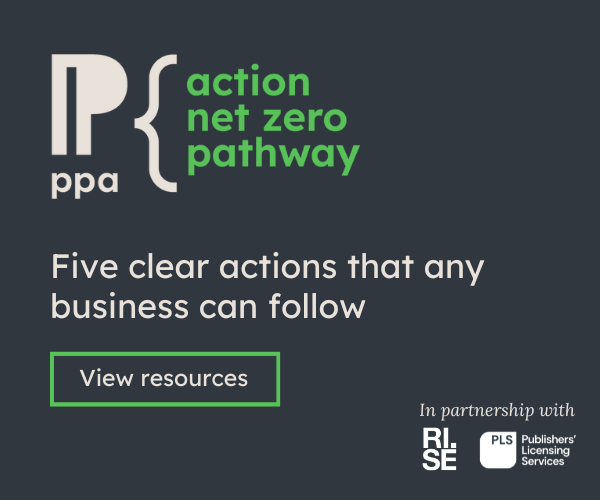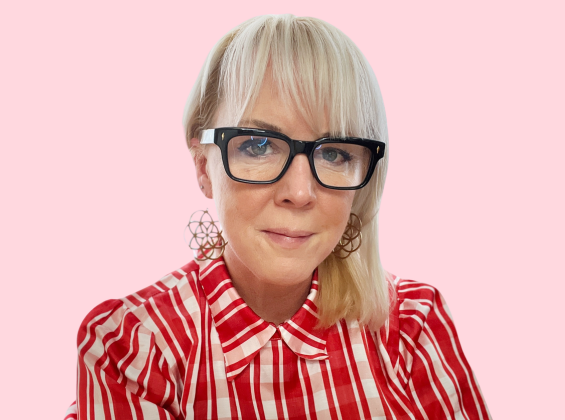What made you want to work in the publishing industry?
I wasn’t drawn specifically to publishing, but I have always preferred print to digital when it comes to design. Digital is great for rapidly changing information but there is something special about holding a physical copy of something–whether it’s a book or a magazine–that online can’t compete with. I found myself being pulled towards the print side of design quite early on, perhaps because there is a bigger sense of something being “complete” when it’s been printed and can’t be changed anymore. In a way, it’s like a snapshot of time. I also feel like print forces you to really think about the point of what you’re trying to show, because your canvas is a lot more limited. And so, I find that working for a print magazine suits me really well.
Chart your career from the start to where you are now.
I studied graphic information design at the University of Westminster, which is where I figured out that data visualisation was what interested me. I enjoyed graphic design itself but always felt a bit lost and unable to truly connect with it, but working with data felt different – it was like I’d found the missing piece in a jigsaw. After graduating I spent a while building my portfolio while working as it was lacking in data visualisation, and then a friend sent me a link to a data visualiser internship at The Economist. I applied thinking that there was no way I would get an interview, but somehow managed to actually get the role! After my internship ended, I worked freelance for a couple of years (mostly still at The Economist) and was offered a permanent position there as a visual data journalist (VDJ) in April last year.
What does your job as visual data journalist at The Economist entail day-to-day?
For most of us (we have six VDJs who work on print graphics and two who build our interactive charts), it varies day-to-day as we are strongly tied to a weekly print schedule. Before we go to print each week a lot of our time is spent creating the maps and charts you see in the magazine. We also produce charts for our Espresso app and Daily Charts for online. Once Thursday comes around we have a bit more freedom to catch up on work we haven’t had time to focus on, such as charts for the special reports that we publish, or making an early start on something more complex for the following week. Or if we have a quieter week–which isn’t often at the moment–we can find some time to do some work-related learning.
What is the process from collecting the data set to turning it into something visually digestible for readers?
It depends on the scale of the graphic. For example, our Graphic Detail print page requires a lot of work from a data journalist (who usually writes the accompanying text) just to get the data cleaned and ready to visualise. This can sometimes take weeks. Then a VDJ will spend some time (usually 1-2 days) exploring the data and looking at the best ways to visualise it. It’s very much a collaboration between visual and non-visual data journalists. For our “regular” charts, usually someone from our Research department will source the data for us and we will either use our in-house charting tool or R (a programming language used to analyse and visualise data) to visualise it, before styling it in Illustrator. Then there is a bit of back-and-forth with the relevant journalists and editors deciding on the details, before the chart is finalised. For a typical print chart, at least seven or eight people in various roles will look at it before it’s published. And that usually irons out the things that don’t really work or make it harder to understand.
What are the important things to consider when you are presenting data in charts to readers?
I think our main aim is to make sure that all of our charts are clear and easy to understand. We spend a lot of time thinking about things such as the type of chart, scales, labelling and colours to try and achieve clarity. Never assume that the reader will know what your chart shows, or that they will be familiar with how to read charts at all. It’s also important to only use data which adds information to a story. We don’t like using charts just for the sake of it – it has to have a purpose and visually explain a point that is being made otherwise it’s essentially “junk” taking up space, and that can actually be a distraction in a story rather than an asset. We can usually filter those out pretty quickly because we’re regularly fighting for space on the pages, so charts that aren’t informative enough are going to get the chop if there isn’t enough space.
Generally, which types of data posts have the highest engagement?
People like data relating to social issues and they love a good ranking, where they can find themselves in the data and compare where they live to elsewhere. We also find that maps do quite well, for similar reasons. The typical subjects that get attention–sex, drugs and money–also get a lot of engagement, especially on social media where the audience demographics are a little different to our typical print readers. Having said that, we will only publish something that we think is worth publishing. Engagement is great but not at the expense of the quality of our journalism.
How has the type of data you are dealing with changed since the coronavirus outbreak?
We obviously have a lot of coronavirus data at the moment. We publish several charts each week that are about it, and we’re constantly trying to find the most up-to-date and accurate data to inform our readers, as well as the best ways to visualise it. As it’s very new to us, it also means learning about ways in which the data are collected and reported by each country and organisation so that we can use it in a way that’s not misleading. Keeping track of a rapidly changing global dataset, plus exploring other data that gives an insight into what’s happening takes a lot of people and a lot of our time as a relatively small data journalism department.
What data-related thing has been on your radar?
I’m always on the lookout for interesting transport data. I love the thought that every person has their own personal “footprint” on the planet in terms of their movement around places, and I think that’s why I like finding data that plays into that. I’m also trying to learn R as it’s a great way to visualise more complex data and gives you room to experiment easily with visualisations. We use our own charting tool for a lot of our standard print charts but R is a lot more flexible in terms of how you can visualise data, and we are increasingly using it in our work.
What tips do you have for working from home?
As soon as you have work to do, do it (within working hours). Everything takes longer when you’re working from home and you need to factor in that you are very unlikely to get a response to anything immediately. So not procrastinating and getting something done means setting that process in motion earlier. And don’t be afraid to follow up on a message if you haven’t had a response – your colleagues will be inundated with communication from various channels and may well have forgotten or not seen it. Lastly, I would encourage including all relevant people in emails and meetings. When you don’t see or speak to colleagues face-to-face it’s very easy to get left out and not know what’s happening. It’s really important to communicate effectively and to everyone because that’s the only tool you have to get things done. And where someone might be prompted to mention a particular idea or problem to you when they see you in the office, it’s not as likely that they will remember outside that setting.
What magazine would you choose to stockpile?
Without trying to be a walking cliche, it would have to be The Economist. I didn’t have too much knowledge about the magazine before I started working here, but I’ve since fallen in love with it and feel a sense of pride when I see someone on the train with a copy. Knowing what goes into producing it every week and the minds that are behind everything from the words, to the charts and the layouts gives it a new meaning for me. I have my favourite sections of course–Britain, International and our own Graphic Detail–but it’s all worth reading and gives you the space to form your own opinions. When I was a teenager I definitely stockpiled Kerrang! and bought it every week without fail, although I have sadly moved on.









